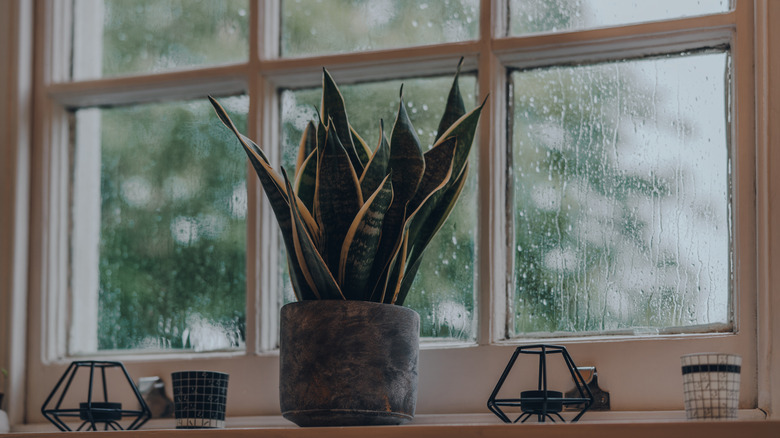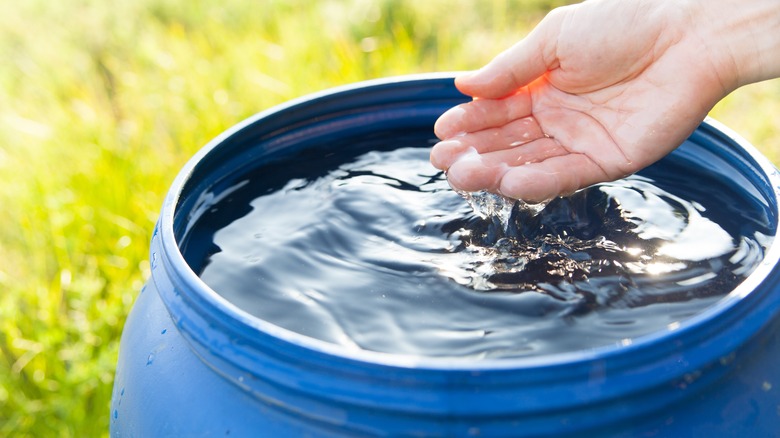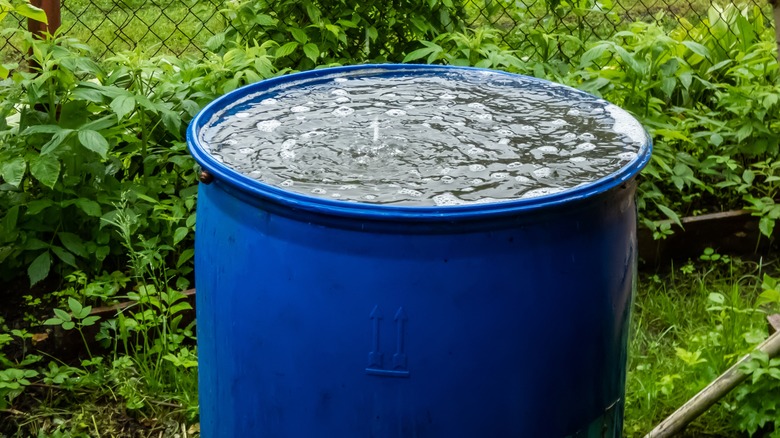Should You Put Your Houseplants Out In The Rain?
Whether you have a couple of houseplants scattered around your home or a full-blown interior jungle, caring for houseplants is an incredibly rewarding hobby. There are few things more satisfying than watching your plants grow from their small nursery pot to full and lush trees or vines. In fact, studies have shown that owning and caring for houseplants leads to reduced stress levels and increased productivity and concentration by as much as 15%, according to NBC News.
While simply watering your plant as needed suffices, many eager houseplant owners like to give their plants a little extra attention. One of the best rules when it comes to growing healthy houseplants is to replicate their natural environment as authentically as possible. Since most houseplants have tropical or subtropical origins, many people choose to put their plants outdoors during hot and humid weather, as well as thunderstorms. However, there are risks associated with bringing your plant outdoors during the rain.
Collect rainwater instead
Rainwater itself is incredibly beneficial for plants. As Flourishing Plants points out, rainwater is rich in lots of nutrients and minerals plants love, chief among them being nitrogen. It also tends to have more oxygen than tap or filtered water. As a plus, rainwater doesn't have fluoride, which can damage many plants.
While rainwater may be beneficial for your houseplants, the same can't always be said for actual rainstorms. There are two risk factors to bringing your plant outdoors while it's raining — temperature, and the amount of water, per Plant Care for Beginners. If the rainwater is too cold, it could easily shock the plant's root system and kill it. Similarly, too much rain without proper drainage can drown your plant, or at the very least lead to root rot.
Even if you have good drainage and warm weather, the rate at which the rain falls can still be too overwhelming, especially for more delicate plants. Finally, if the drops are too hard or the wind is too strong, your plant's leaves could get damaged. So, generally, leaving your plants outdoors while it's raining is not a good idea.
How to collect rainwater
Collecting rainwater and using it on your houseplants is a much safer and more controlled method, but still incredibly beneficial. Rainwater collection is generally very simple, but you can also opt for more complex and efficient methods. The easiest way to collect rainwater is to simply set out a bucket, bowl, or other receptacle. You can also, as Seametrics explains, get a dedicated rain barrel and place it under your gutters for optimal collection.
If you're wanting to get a bit more advanced, you can also have a rainwater collection system installed, but that's a much larger, more professional project. These collection systems are also usually for converting rainwater into the water used in your home. However you collect the rainwater, simply let it either heat up or cool down to room temperature and remove any visible debris (leaves, twigs, etc.) before using it to water your houseplants.


